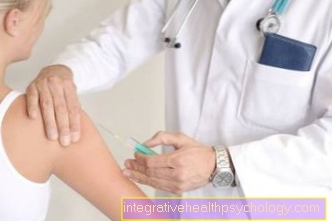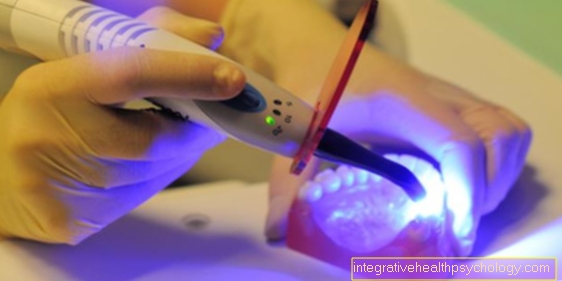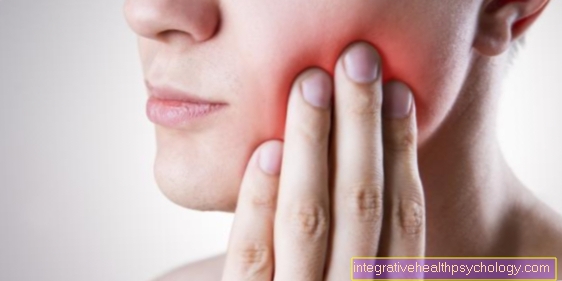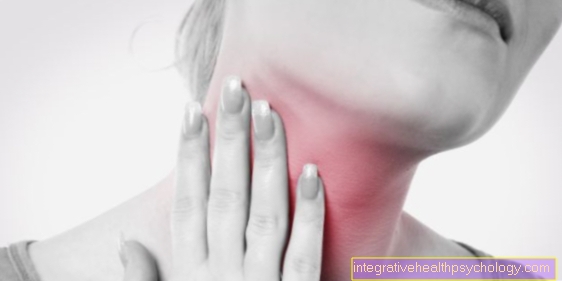Boils in the ear
introduction
A boil in the ear is an inflammation of a hair in the ear, more precisely in the external ear canal. This leads to the formation of a small pus-filled nodule around the hair, which can sometimes lead to severe pain.

Symptoms of a boil in the ear
A boil in the ear always leads to pain, which is mostly diffusely projected onto the ear and is not necessarily due to the inflamed hair. The pain is usually very strong and has a throbbing or stabbing character. Pulling on the ear can make the pain worse, depending on where the boil is. Sleeping on the side can also be perceived as painful for some patients, as the changed sleeping posture may cause the ear to be slightly displaced and thus put pressure on the boil. But not only the pressure on the ear is perceived as uncomfortable. Chewing or speaking can also lead to pain, as the movement of the jaw inevitably shifts the external auditory canal slightly. These small shifts can cause the patient to feel pain. In addition to the pain, swelling can also occur in the area of the external auditory canal. If the patient could look into his ear, he would see a kind of pus-filled pimple, around which there is sometimes a strong reddening.
Causes of a boil in the ear
A boil in the ear is always due to inflammation. This is an inflammation that affects the hair follicle, i.e. the structure of the hair that is in the skin. It is important that the hair does not have to be particularly large, a small hair is sufficient, which would hardly be visible without inflammation. The inflammation that then leads to the boil in the ear is mostly caused by staphylococci. An infection can come about when a patient tries to remove the hair in the outer ear or when the patient tries to clean the ear and thereby spreads germs into the ear. Bacteria can also be carried into the ear via earplugs, which are used when listening to music, or via earplugs, causing a boil in the ear. Most of the time, it is advisable not to “clean” the external ear canal using cotton swabs. On the one hand, the eardrum and, in the worst case, the organ of equilibrium can be damaged, on the other hand, bacteria such as staphylococci can be introduced, which can then cause a painful boil in the ear. But it's not just mechanical irritation that can bother the ear. Frequent swimming in chlorinated water or frequent cleaning with washing gels can also mean that the ear no longer has sufficient self-protection to ward off possible germs. This promotes inflammation, for example with the staphylococcal bacterium, which in turn can lead to a boil in the ear. In some cases, chronic conditions can also lead to a boil in the ear. Especially in diabetes mellitus patients, i.e. patients with so-called diabetes, such boils can occur repeatedly (recurrent). Neurodermatitis, immune deficiencies or psoriasis can also lead to a boil in the ear, as the skin can be severely damaged by these diseases and can therefore only insufficiently fulfill its protective function in sensitive areas such as the external auditory canal.
You might also be interested in: Furunculosis
diagnosis
To the Diagnosis of a boil in the ear often does not need a doctor. The patient has a kind of pimple ear which is painful and filled with pus. However, since the external auditory canal is difficult to see, it is often difficult for the patient to assess this. That is why it is better to see a doctor in the event of pain in the ear of unknown cause to have it checked. The doctor may first conduct a conversation with the patient anamnese. Then an inspection of the external ear canal, so the doctor can determine that it is one Boils in the ear acts.
Treatment of a boil in the ear
The therapy for a boil in the ear is very dependent on how far the boil has been able to spread. In the case of a boil that is discovered quickly, it is often sufficient to have it opened by the doctor, i.e. to scratch it lightly and then to clean the ear sufficiently. If the inflammation has not progressed far, it is sometimes sufficient to treat the affected area with a disinfectant and then wait. Often times, a boil in the ear is a very small infection that can look similar to a pimple. It is important that this cleaning and disinfection is carried out by a doctor and not by the patient himself, as the patient does not have an adequate view into the ear and thus may damage more than it helps.
In some cases, just cleaning the boil in the ear may not be enough and the inflammation will progress. In this case, it may be important to give antibiotics to the patient. This is only rarely needed, but should be taken regularly when administered so that the bacteria that are responsible for the boil are actually killed and the inflammation is not carried on further.
If the boil is particularly painful, the patient can receive painkillers, which he can take for a short period of time after the treatment.
If the boil in the ear has to be opened surgically, it can sometimes be helpful if the patient is given a local anesthetic, as this can be painful under certain circumstances.In this case, the patient is given a light local anesthetic, similar to what the dentist does when he has to drill a tooth.
Read more on the subject at: Operation of a boil
If the ear is severely swollen due to the boil in the ear, the patient can receive anti-inflammatory and therefore decongestant ointments or ear drops. In any case, it is important to avoid damp areas as much as possible during treatment of the boil in the ear. This means that the patient should try to run as little water as possible into the auricle when showering and should also avoid going to the swimming pool. If the boil in the ear does not improve despite the therapy being followed, it is also necessary to see a doctor so that he can take further measures.
Read more on this topic at:
- Treatment of a boil
- Ointment for a boil
prophylaxis
A Boils in the ear very often arises when Patient's ear too intensely wanted to clean and only damage the ear. Especially Cotton swabs or washing solutionsthat are not suitable for the ear should be avoided. Has a patient Problems with cleaning the ear, he can remove the ear from one every 6 months ENT doctor (ENT doctor for short) have it professionally cleaned and thus avoid a boil in the ear.
forecast
At a Boils in the ear it is mostly a completely harmless inflammation of a little hair. Many patients are more likely to have a small boil in the ear, which disappears by itself after a short time. Only in in rare cases there are complications like one Abscess formation in the ear. However, this tends to happen in exceptional cases and usually when the patient has the Boils ignored for too long or tries to remove the boil himself and this leads to skin injuries through which the bacteria get into deeper layers of the skin.
How dangerous are boils?
As a general rule are boils Not dangerous and in most cases they will heal on their own. They then empty spontaneously, the pus can drain away and the infection also subsides after a few days. Still that exists riskthat the bacteria in the Bloodstream reach. Then they can cause general blood poisoning (sepsis). A Blood poisoning should then be treated by a qualified doctor. Boils on the face there is a risk that the germs will enter from there brain or Spinal cord be abducted. Also in the area of the ear the proximity to the brain and spinal cord is similar. A doctor should be consulted for treatment because of the risk that the bacteria can be carried over. A self-treatment, especially that Express of a boil, should absolutely avoided because it accelerates the spread of bacteria.



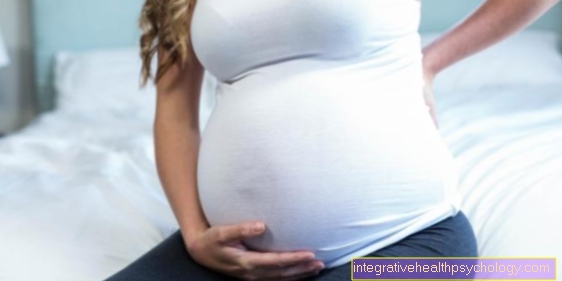

.jpg)
